Sport Management News
Voices of Service
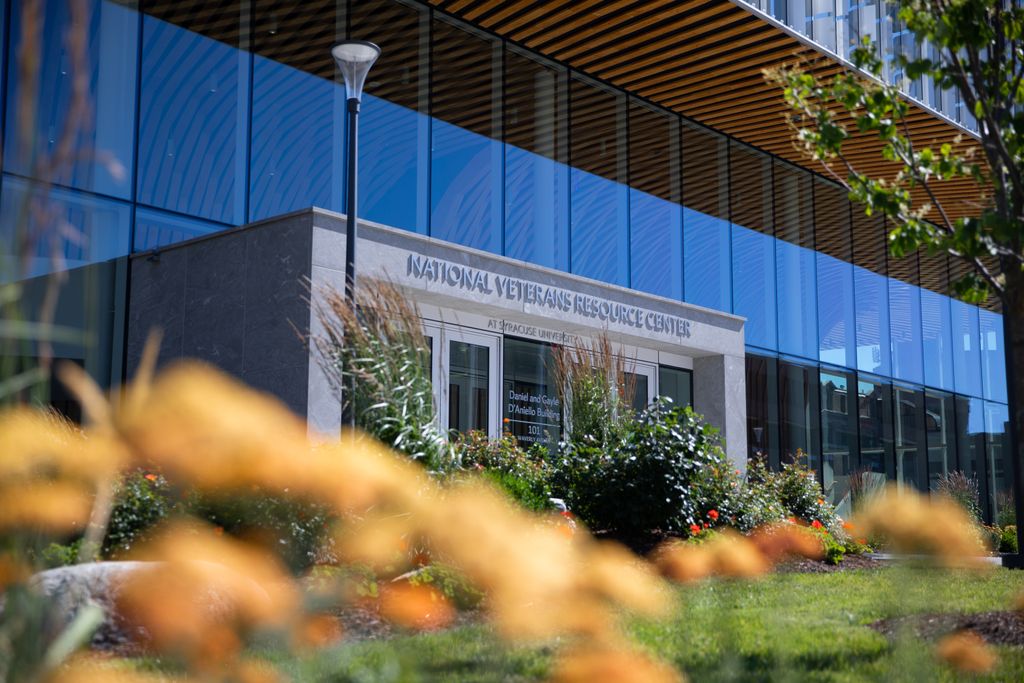
Call for Posters
The Institute for Veterans and Military Families (IVMF) and Academic Affairs invite you to submit poster abstracts for an inaugural event spotlighting diverse and dynamic work related to the interests and needs of veterans and military-connected populations. By showcasing ongoing and planned research projects, curricular innovations, program initiatives, and community engagement, we aim to amplify these efforts and foster new collaborations across our campus and community.
When and Where
- Date: April 10, 2025
- Location: National Veterans Resource Center (Syracuse University)
- Time: 12:30 PM – 3:00 PM
Who Should Submit and Attend?
- Syracuse University students (undergraduate, graduate) and trainees (postdocs)
- Syracuse University faculty and staff
- Community partners and collaborators in the Central New York region
Topics of Interest
We seek posters that highlight completed, planned, or in-progress research, curricular work, or applied services and programming related to the lived experiences, needs, or interests of veterans and/or military-connected families and individuals. We welcome contributions from all disciplines and fields that intersect with veteran and military-connected topics. Relevant topics include, but are not limited to, the following:
- Research Projects and Analyses that are completed, planned, or in-progress
- Curricular or Course-Related Efforts that focus on or integrate veteran- and military-related content
- Programs and Services that benefit or support veterans and/or military-connected populations
- Student Internships or Field Placements involving veteran research, support, outreach, or engagement
Important Dates
- Abstract Submission (250 words): Due by February 24, 2025
- Notification of Acceptance: By March 7, 2025
- Final Digital Poster Email Submission: By April 7, 2025, to Julianna Fitz at jlfitz@syr.edu
Submission Details
- Submit abstracts to Julianna Fitz at jlfitz@syr.edu
- Include: Title (up to 150 characters); Author name(s); Affiliation(s); and Email address(es)
Event Schedule
Requirements, Process, and Questions
- All presentations will be in person and posters must be printed.
- Presenting authors are requested to attend the poster session.
- Presenters are responsible for printing their own posters.
- Posters should be no larger than 30″ x 40″ (portrait or landscape).
- Easels, foam board, and binder clips will be provided.
- Posters will be accepted based on the quality of the abstract and the order received.
- For questions, please contact Jamie Winders at jwinders@syr.edu
‘Data is the Great Equalizer’
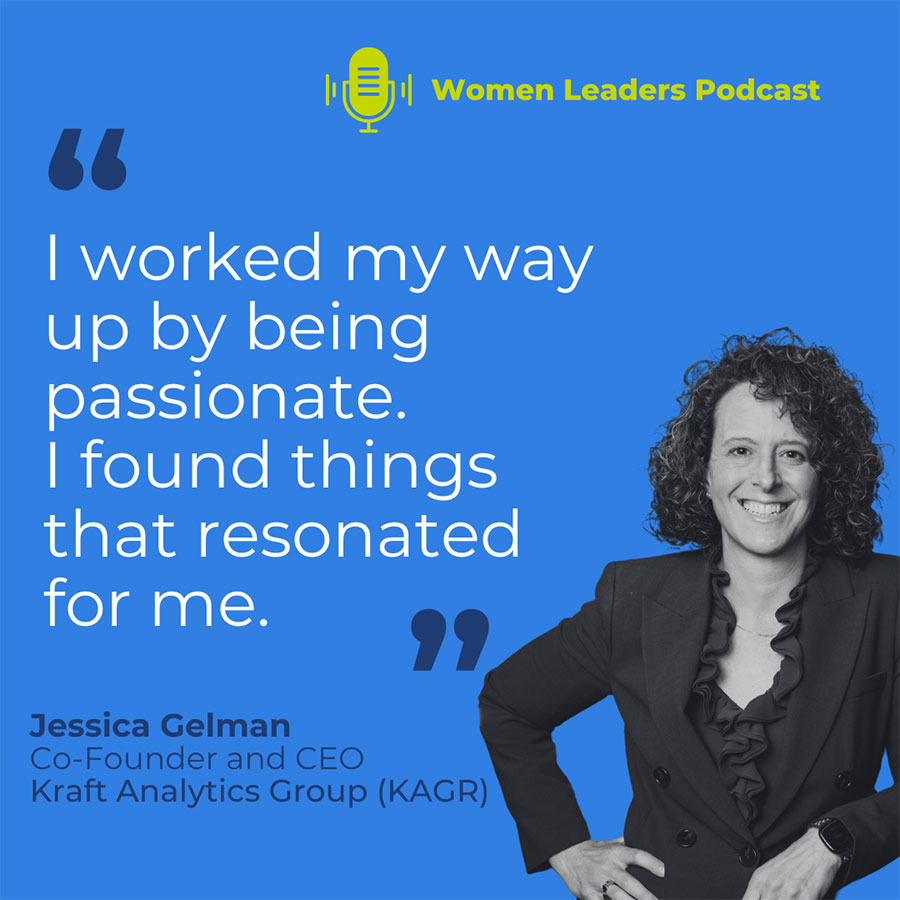
Attending the prestigious MIT Sloan Sports Analytics Conference in Boston is one of the highlights of the year for students and faculty in the Sports Analytics program in the Falk College of Sport and Human Dynamics.
In a recent podcast with Women Leaders in Sports (WLS), MIT Sloan Sports Analytics Conference co-founder Jessica Gelman discusses how she continues to create new avenues for women to succeed in data science careers. As co-founder and CEO of Kraft Analytics Group, a leading sports and entertainment analytics firm, Gelman is an influential leader and innovator who is driving the sports analytics movement.
Listen to the Women Leaders Podcast with Gelman on the WLS website.
This past August, Syracuse University announced a unique partnership with Women Leaders in Sports that seeks to create exceptional learning opportunities for Falk College students and faculty. The collaborative effort will create mentoring, learning, fellowship, internship, and membership opportunities for students, provide access to professional memberships to faculty, and support faculty attendance at significant events such as the Women Leaders in Sports National Convention.
The partnership with WLS is one of the cornerstone relationships for the new Falk College of Sport, which will launch July 1 as the first college on a high-research activity campus (R1) to focus on sport-related disciplines.
Falk College students annually attend the MIT Sloan Sport Analytics Conference. The students who are scheduled to attend this year’s conference March 7-8 in Boston include undergraduate students Nathan Blackman, Madelyn Forster, Hunter Geise, Adelaide Gilley, Christopher Marfisi, Jarrett Markman, Jonah Soos, and Evan Vassilovski, and graduate students Justin Chambers, Camilo Espinosa, and Andrew Friberg.
At last year’s conference, sport analytics professors Shane Sanders and Justin Ehrlich presented their research that shows that when taking free throws and shot selection into account, the value of 3-point shots in the NBA is now less than 2-pointers. Sanders, Ehrlich, and sport analytics professor Adrian Simion will be attending this year’s conference.
Welcome Back!
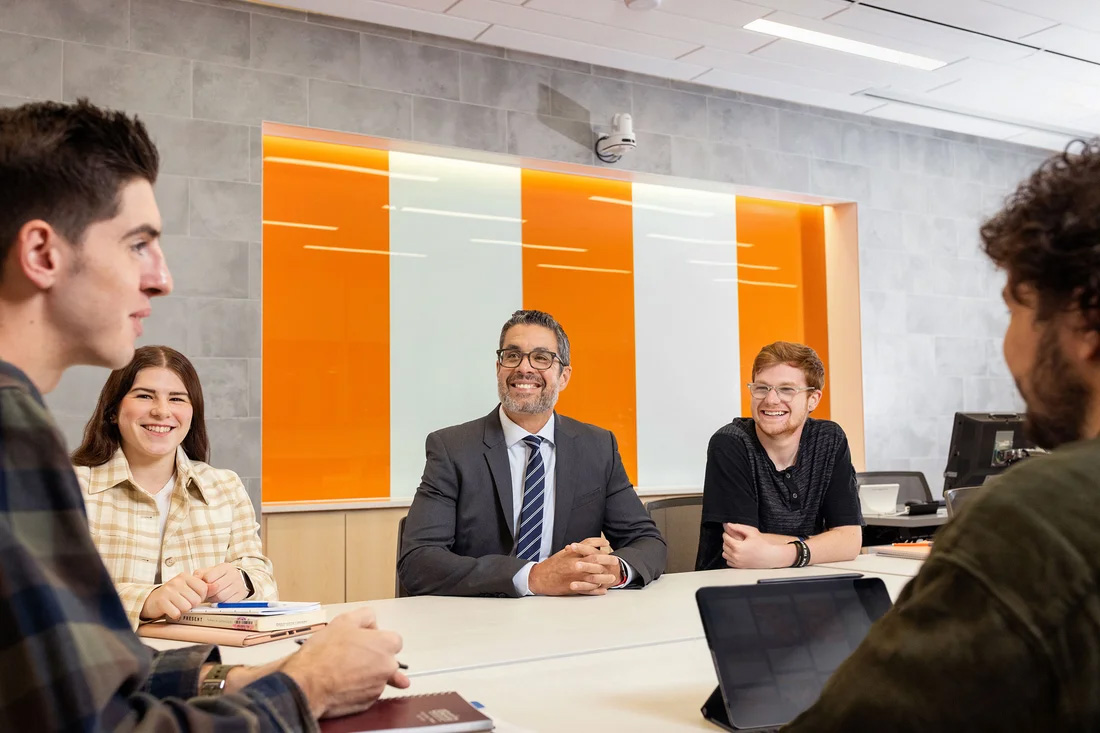
Dear Falk College Students,
Welcome back to Syracuse University! I hope you had a joyous holiday season and an opportunity to relax, spend time with family and friends, and enjoy the football team’s convincing win over Washington State in the Holiday Bowl!
I’m excited about the new semester and I look forward to watching all you will accomplish as you pursue your academic and professional goals this spring. As classes begin, I want to remind you of resources at Falk College and on campus that will help you succeed:
Official Syracuse University Communications
Syracuse University email is the primary communication method at the University. Your professors and University offices will contact you with important information using your Syracuse University email address (ending in “@syr.edu”), not your personal email address. It’s important to read your University email at least once every day so you’re aware of the latest information that’s essential to you.
Student Support Services
Falk College Student Services is an important resource in your support system at Syracuse University. Student Services counselors are here to provide you with academic advising and help you meet your requirements and goals. They are also your resource for private consultation related to student social and emotional concerns. If you have any concerns this semester, please contact Student Services or visit Falk 330, Barclay Suite, in the Falk Complex.
I encourage you to connect with the staff at Falk Career Services who can help you prepare for life after college through career exploration, internship and job searching, professional networking, and more. They are also located in Falk 330, or you can search for opportunities through Handshake, the University’s job search and professional events portal.
In addition, you can connect to spiritual life on campus at Hendricks Chapel, and health and counseling services in the Barnes Center at the Arch.
Student Spaces in Falk College
The Student Lounge, located in Falk 216, is available to you anytime the Falk Complex is open. The lounge has a microwave, refrigerator, and vending machines for student use. Across the hall from the Student Lounge is Falk Café, which is open from 8:00 a.m. to 3:00 p.m. Monday through Friday starting Jan. 13. Visit the Food Services website for up-to-date operating hours for cafés and dining centers across campus.
There are several computer labs in the Falk Complex. Falk 113 is a PC lab, and Falk 229 is a quiet study area that has both PCs and Macs available for your use. Both spaces are available to students at any time. Falk 400 and 407 are PC labs that are also used as teaching classrooms. When class is not in session, they are open for student use. You may check their schedule of availability using the 25Live website. You may also use the quick-print stations in Falk 216 and 229 for printing and email. These stations log out automatically after 10 minutes of use.
Ways to Get Involved
There are more than 300 student organizations at Syracuse University. Be sure to explore organizations that might be outside your usual interests, too. Remember, this is a great way to meet new people and discover something new about yourself!
There are many exciting events planned for Spring 2025, starting with the historic 40th Annual Rev. Dr. Martin Luther King Jr. Celebration Jan. 26 at the JMA Wireless Dome and leading to Commencement Weekend May 10-11. You can find more activities and events on campus by visiting the Syracuse University Calendar. For more resources and opportunities to make the most of your Syracuse experience, I encourage you to visit syracuse.edu/life/students.
I wish you the best this semester and please reach out to us if you’re in need of services and support. On behalf of the Falk faculty and staff, I wish you continued success on your journey here at Falk College and the wider Syracuse University community.
Go Orange!
Jeremy S. Jordan, Ph.D.
Dean
Falk College
From Syracuse to South Korea
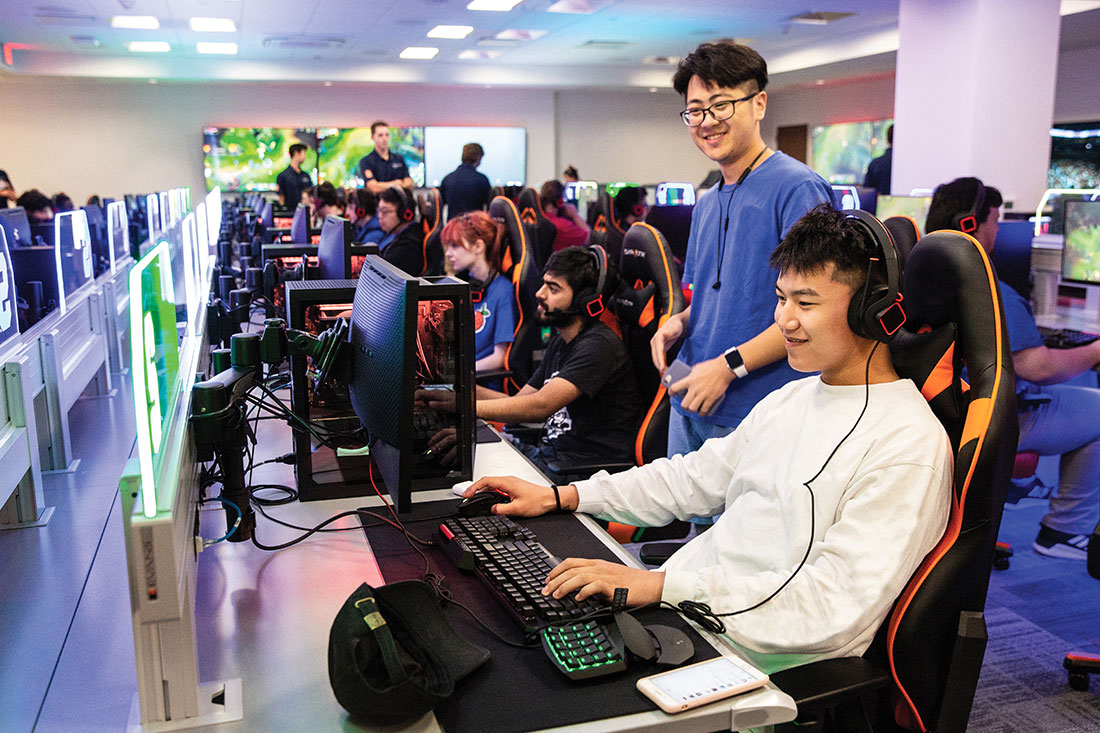
Syracuse University and global esports and gaming organization Gen.G are collaborating on a multiyear partnership designed to enhance student engagement opportunities and support the University’s first-of-its-kind esports communications and management bachelor’s program.
The partnership will feature participation in the Gen.G Practicum Abroad, which offers students the opportunity to take part in an intensive, three-week program to study in South Korea. The partnership will also bring Gen.G’s Campus Takeover conference and program to Syracuse to celebrate the University’s soon-to-be-completed esports hub in the center of campus at the Schine Student Center. Campus Takeover events draw students, faculty, professional leaders and other stakeholders from around the world to discuss key issues and emerging trends in the esports and gaming industries.
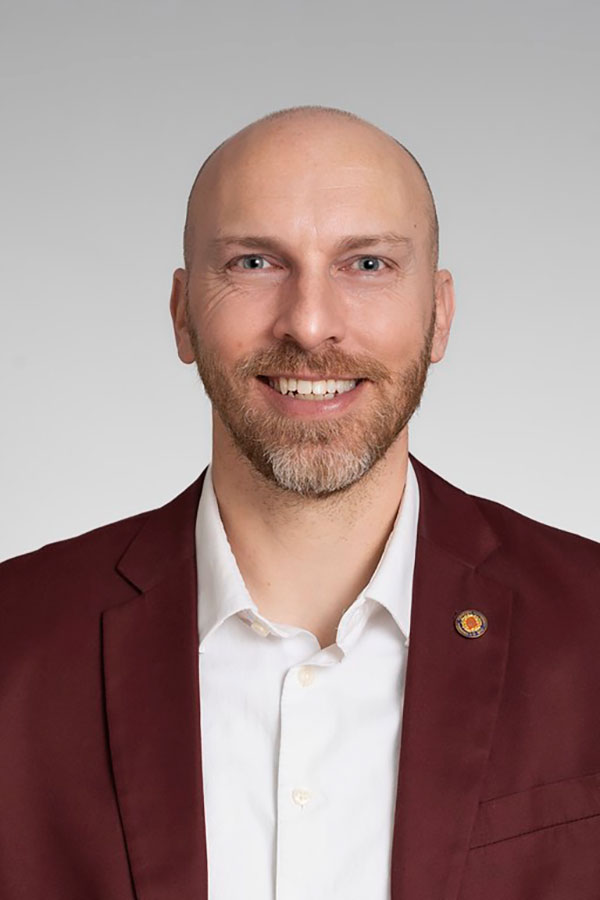
Syracuse University is the first major university in the country to offer an esports bachelor’s program. The degree is offered jointly by the Newhouse School of Public Communications and Falk College of Sport and Human Dynamics.
“As a leader in esports education, it is essential for Syracuse to deliver to the right mix of academic excellence and hands-on experiences to our students,” said Joey Gawrysiak, executive director of the esports degree program. “Given Gen.G’s outstanding track record of delivering educational programming that resonates with students, we look forward to building this important partnership in a growing field.”
The Gen.G Practicum Abroad program will offer Syracuse students an expansive hands-on learning experience in the heart of the esports industry in South Korea. The program led by Gen.G professionals includes custom esports programming, mentorship by industry professionals, special lectures, industry “lunch-and-learns” and professional networking, all while immersing students in Korean culture and its history in esports. Students will visit competitive organizations and gaming publisher studios.
Students will also take part in Gen.G’s award-winning Campus Takeover event, which will be hosted for the first time on the Syracuse campus in fall 2025. The free-to-enter conference will focus on supporting the esports ecosystem in the Northeast and Mid-Atlantic, promoting academic, broadcast and competitive excellence through informative panels and seminars featuring industry professionals. The Campus Takeover at Syracuse will also be the first to feature an innovative business case study competition.
“Syracuse and Gen.G believe education plays a critical role in the future development of esports and gaming globally, so we’re committed to delivering hands-on experiences for the students who seek a rewarding career in our industry,” said Arnold Hur, CEO of Gen.G. Hur and Yugina Yan, the company’s assistant director of operations for education will serve as development advisors to the Syracuse’s esports program.
Last spring, Gen.G hosted industry lectures for students in the Department of Sport Management in Falk College sand a marketing lecture exclusively for Syracuse esports students during the League of Legends World Championships in Berlin.
Gen.G’s commitment to education is celebrating its fifth year with its Gen.G Foundation, a $1 million pledge over the next 10 years to advance the importance of education in the esports and gaming industry. The foundation awards scholarships to more than 40 students across the United States. Gen.G also operates the Gen.G Global Academy, the world’s first fully integrated academic esports program in Korea.
About Gen.G
United under #TigerNation, Gen.G’s core mission is to help fans and athletes use the power of gaming and esports to get ahead in and beyond the competition. With an emphasis on education, DEI initiatives, and innovative partnerships, Gen.G is a commercial and thought leader, building a global, inclusive and cross-cultural future for gaming. Its unique portfolio of teams includes the Seoul Dynasty (Overwatch League), League of Legends Champions Korea (LCK), the Gen.G & Gen.G Black VALORANT teams, the PUBG Gen.G team, and the NBA2K’s Gen.G Tigers (the first non-NBA owned team in the NBA 2K League). Gen.G has also been a major proponent in seamlessly bringing in non-endemic brand partners to the world of gaming and esports, including 1Password, Burberry, Crocs, King’s Hawaiian, McDonald’s, Mobil1, Procter & Gamble, Toyota, and more. Gen.G also operates the Gen.G Global Academy, the world’s first fully-integrated academic esports program in Korea. Gen.G’s teams, content creators and corporate staff work out of their offices in Los Angeles, Seoul and Shanghai. For more information, visit GenG.gg or follow on Twitter @GenG.
About Syracuse University’s Esports Communications and Management program
Syracuse University’s first-of-its-kind Esports and Communications Management B.S. program is offered jointly by the S.I. Newhouse School of Public Communications and the Falk College of Sport and Human Dynamics, which on July 1, 2025, will become the Falk College of Sport focusing entirely on sport-related disciplines. The program includes three tracks: Esports Business and Management, Esports Communications, and Esports Media and Design. It prepares students for an exciting career in esports and related industries through classes in event management and marketing, broadcasting/production, communications, content creation, entrepreneurship, strategic communications, and esports experience and design.
Running With A Purpose
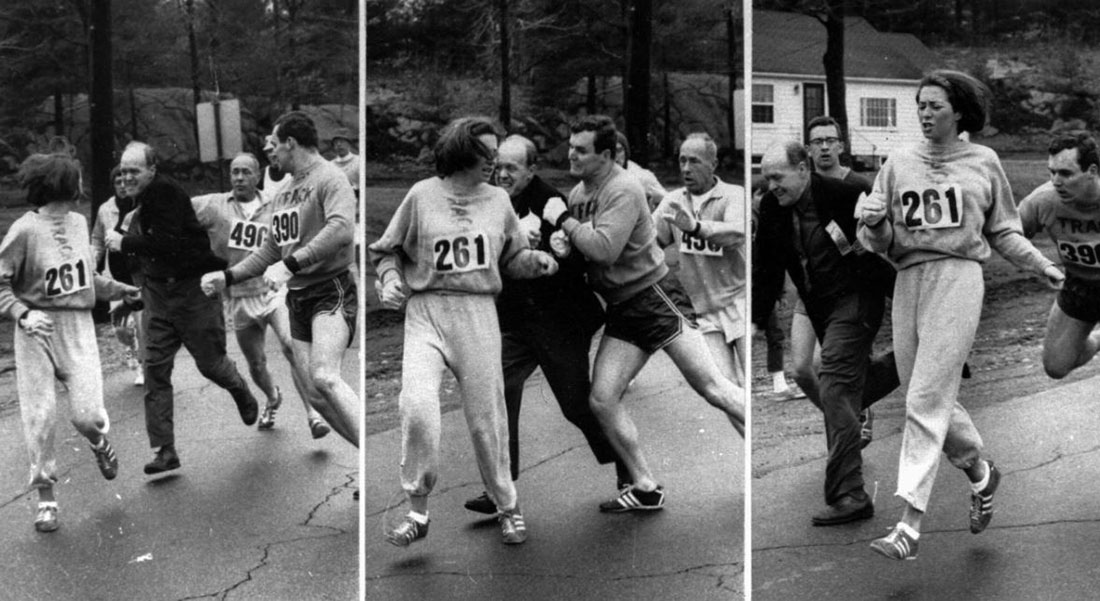
Instead of wallowing in what could have potentially been the lowest moment of her life, Kathrine Switzer ’68, G’72, H’18 used the adversity she overcame during her historic run at the Boston Marathon as fuel to inspire women around the world.
Switzer, who in 1967 became the first woman to officially run and finish the Boston Marathon when she entered as K.V. Switzer using bib number 261, contended not only with the grueling course and frigid race conditions, but also a physical challenge from race director Jock Semple. Around mile four, Semple leapt out of the photographers’ press truck and headed straight for Switzer and her contingent of runners from Syracuse University.
As Semple tried to rip Switzer’s bib off the front and back of her grey Syracuse track sweatshirt, Switzer was frightened. Her coach, Arnie Briggs, the University’s mailman and a veteran runner at the Boston Marathon, tried to convince Semple that Switzer belonged in the race, to no avail. Only after Switzer’s boyfriend, Tom Miller, a member of the Orange football and track and field teams, blocked Semple, was Switzer free to continue chasing down her pursuit of history.
In that moment, Switzer followed Briggs’ advice to run like hell, driven to prove Semple and the other doubters wrong by finishing the race. She hasn’t stopped running with a purpose since.
’Cuse Conversations: How Trailblazer Kathrine Switzer ’68, G’72, H’18 Uses Using Running to Motivate, Inspire Women Worldwide
“As I was running, I realized that if these women had the opportunity, just the opportunity, that’s all they needed. And by the time I finished the race I said, ‘I’m going to prove myself, play by their rules and then change those rules,’” says Switzer, an emeritus member of the Falk College of Sport and Human Dynamics’ Department of Sport Management Advisory Council.
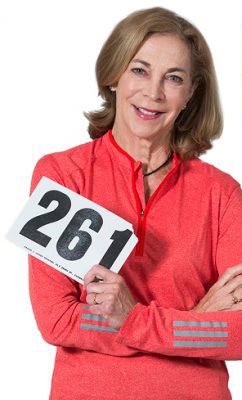
“From the worst things can come the best things and that’s what I tell students whenever I speak to classes. If something is wrong, there’s an opportunity to change it, and we can then reverse it. When you’re training for a marathon, you’re out there for hours by yourself. I loved to use that time to take on a problem and solve it,” says Switzer, who earned bachelor’s degrees in journalism from the S.I. Newhouse School of Public Communications and English from the College of Arts and Sciences, and a master’s degree in public relations from the Newhouse School.
After her triumph in Boston, Switzer would complete more than 40 marathons, including winning the New York City Marathon in 1974, and she was instrumental in getting the women’s marathon included in the Summer Olympics. Switzer’s global nonprofit, 261 Fearless (an homage to her Boston race bib), has helped thousands of women discover their potential through the creation of local running clubs, educational programs, communication platforms and social running events.
On this “’Cuse Conversation,” Switzer discusses making history as the first woman to run the Boston Marathon, why she’s never stopped advocating for the inclusion of women in sports and what it means to be a proud alumna whose running career was launched as a student on campus.
How did you use the Boston Marathon experience to create more running opportunities for women?
I was raised by parents who said you know right from wrong, so always go for what’s right. I knew it was going to be time-consuming, but I knew it was important to both correct the error the establishment had made, but more than that, I wanted women to know how great you can feel when you’re running. When I was running, I felt empowered. I felt like I could overcome anything. Running is naturally empowering, it’s a super endorphin high, and I wanted women to experience that.
One of the issues I wanted to solve was getting the women’s marathon into the Summer Olympics. It came down to opportunities and I wanted to create these opportunities, so [once I was working for Avon Cosmetics] I created the Avon International Running Circuit, a series of races around the world that are for women only, where we could make every woman feel welcome and treat her like a hero.
Eventually, we had 400 races in 27 countries for over a million women around the world. We had the participation, we had the sponsorships, we had the media coverage and we had the international representation. In 1981, by a vote of nine to one, women’s marathon was voted into the 1984 Summer Olympics in Los Angeles, California. That was an incredible feeling.
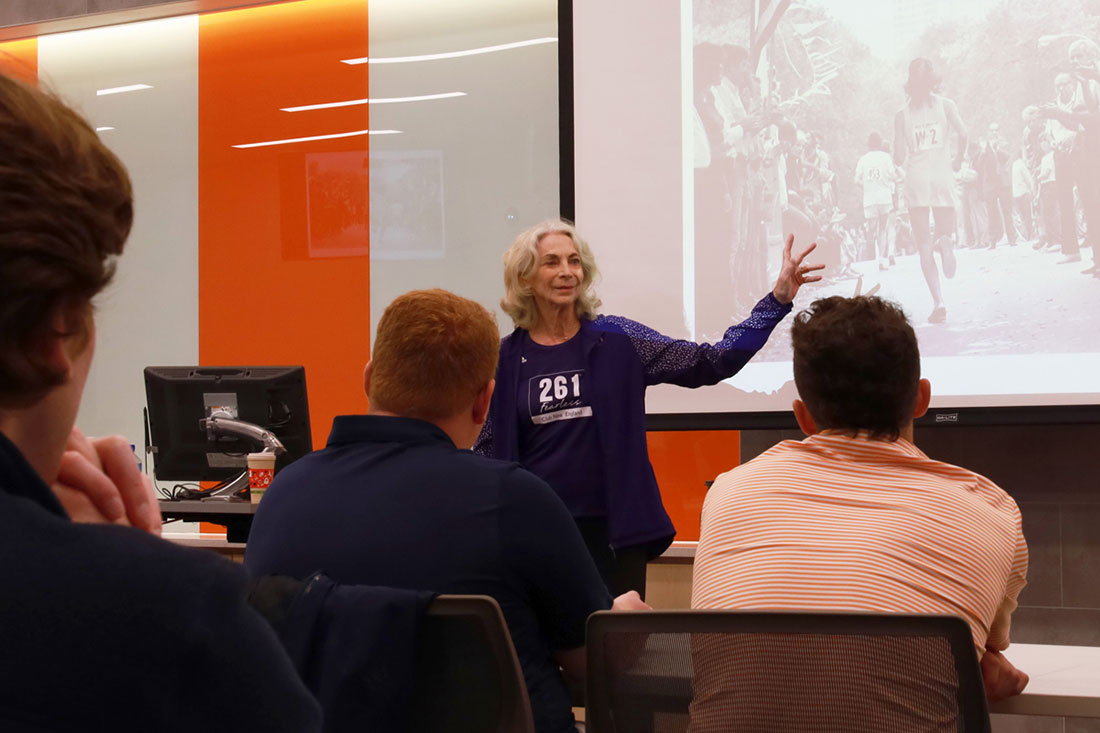
What has running given you?
Running has given me just about everything. It’s given me my religion, my husband, travel opportunities, my health and wellness, but the biggest thing it has given me is this perspective on myself, this empowerment and belief in myself that I can do whatever I set out to accomplish.
What kind of impact has 261 Fearless had in empowering and lifting up other women through running?
We’ve already proved that, regardless of your age, your ability or your background, if you get out there and put one foot in front of the other, you’re going to become empowered. If you want to lift a woman up, show her how to run.
We need to do it at the grassroots level and invite women around the world to have a jog or a walk with one of our more than 500 trained coaches. We’re working village by village, city by city, country by country to spread the word on the life-changing benefits of running, and we’ve worked with nearly 7,000 women in 14 countries and five continents so far. 261 was perfect for this mission. It became a number that means being fearless in the face of adversity. People have told me that 261 Fearless has changed their lives and that they’re taking courage from what I did.
Note: This conversation was edited for brevity and clarity.
John Boccacino:
Hello and welcome back to the ‘Cuse Conversations Podcast. I’m John Boccacino, senior internal communications specialist at Syracuse University.
Kathrine Switzer:
I realized that, if these women had the opportunity, just the opportunity, that’s all they needed. And by the time I finished the race, I said, “Okay, I’m going to be a better athlete, get my credibility together here, prove myself, play by their rules, whatever they are, and change those rules.” I wanted women to know how great you can feel when you’re running. As long as I ran, I felt empowered, I felt like I could overcome anything. And it is, running is naturally empowering, it’s a super, super endorphin high and so it’s very, very beneficial for thinking and clarity and I did a hell of a lot of thinking. When you’re trainingfor a marathon, you’re out there for hours alone and you can take on a problem and solve it.
John Boccacino:
Well, our guest on this episode of the ‘Cuse Conversations podcast is Kathrine Switzer, the inspirational and trailblazing rnne r who made history as the first woman to officially run the Boston Marathon in 1967 but her story is so much more involved than just that date at the Boston Marathon. Kathrine has made a habit out of breaking barriers and, because of her courage in the face of adversity, millions of women have become empowered through the simple act of running. Kathrine has completed more than 40 marathons in her career, including winning the New York City Marathon in 1974.
In 2015, along with four of her friends, Kathrine launched 261 Fearless, a global non-profit that empowers women through running, helping thousands of women around the world discover their self-worth and their potential through customized education and running opportunities. The 261 is an homage to the bib number that Kathrine sported when she successfully ran the 1967 Boston Marathon as K.V. Switzer. Kathrine, it’s an impressive resume you’ve got, I appreciate you making the time, thanks for joining us.
Kathrine Switzer:
Thank you, John, for having me here. I’m an orange girl through and through and it’s wonderful to be back on campus and talking to you.
John Boccacino:
Really, you can tell through and through that you bleed orange and we’ll go through the whole arc, your running career started here at Syracuse. But I know it can be difficult but I do want to go back to that day, the day that has defined and launched your brand and your reputation as being someone who supports and empowers women through running. What was that like with the Boston Marathon, the emotions? What was going through your mind as you and your cross-country coach, and I want to call him a coach because Arnie Briggs was a volunteer but he really played a key role that we’ll get to in your career here, what was going through your mind heading down to Boston?
Kathrine Switzer:
Well, I’ve got to back up, John, honestly, because the story actually began out on the Drumlins Golf Course. I had gone in to see the track coach a couple of days before and asked if I could run on the men’s cross-country team because, at my previous college, I was recruited to run the mile for the men so that they could get points and they had no problems with it. And when I came to Syracuse and I asked the coach since there was no women’s sports teams in those days-
John Boccacino:
Before Title IX, of course.
Kathrine Switzer:
Yeah. But not just running, there was no field hockey, no lacrosse, nothing, nothing. So, I said, “Okay, I’m going to run,” so I asked the coach if I could run on the men’s cross-country team. And he said, “No, it’s against NCAA rules but you can come out and work out with the team if you’d like to.” And I said, “Well, fine, Coach, where do you go?” and he said, “Drumlins,” I said, “Okay, well, I’ll see you tomorrow.” And just before I closed the door, I heard him burst out laughing and say to his colleagues, “I think I got rid of that one.” I was so upset because I said, “Well, what am I going to do now? Am I really welcome or I’m not welcome?” And I said, “No, I’m going to show up. He said I would be welcome, I’m going to show up,” and I went out there. I was very nervous, very nervous. And you know what happened? All the guys on the team came running over to me and saying, “Wow, we’d never had a girl before, this is great.”
And one guy in particular was Arnie Briggs, a volunteer coach, he was the university mailman but he had an ex-marathoner and now he was injured and older, he is 50. He said, “We’ve never had a girl here before and I’ve been training with this team for 31 years. I’m now just a volunteer helping out with the team every afternoon and then I do a jogging if I can and then I go back to the post office.” And so, he saw me out running with the guys and, of course, I couldn’t keep up, I was really slow and he started jogging with me. And he got over his injuries slowly, slowly, slowly because I was slow on the grass and he would regale me every day with a story about his career as a marathon runner. He’d run the Boston Marathon 15 times and it was the day he was the hero in his own life. It was the day when he was more than just a postman, it was the day when people cheered for him, he would finish in the top 10, he was a pretty good runner. The girls at Wellesley would run out and kiss him and his name was in the newspaper.
And so, he inspired me so much to run long, we left the cross-country course and we went out and ran on the roads and we ran longer and longer and longer. And then one day I said I wanted to run the Boston Marathon too and he said, “Oh,” he said, “It’s too bad but a woman can’t do it.” And I said, “What do you mean she can’t do it?” and then I said, “I can do it,” and he said, “Oh, no, no. No woman could do 26 miles.” And I said, “Well, we’re running 10 miles now, Arnie,” and he said, “Ten miles is not 26.” But we argued and I told him a woman had run the Boston Marathon the year before without numbers, he didn’t believe it and he said, “I’ll tell you what, if you show me in practice that you can run Boston, I will take you and if you can do that distance.” And so, one day we did, we ran 26, I said that wasn’t far enough, let’s run another five, we ran 31 and he passed out at the end of the workout and that’s when he said, “You can go to Boston.”
True to his word, he helped me sign up, he insisted I officially enter the race. He said, “You’re a card- carrying member of the Athletic Federation, you’ve got to sign up for the race,” and so I signed up. Being a journalism student, I wanted to be a sports writer so I’d be signing my name, K.V. Switzer so I put down … I wanted to be J.D. Salinger too. So, I put down K.V. Switzer on the entry form, not to defraud them because that’s how I’d been signing my name, also my dad had misspelled my name on my birth certificate and everybody always misspelled Kathrine so I just decided to be K.V. Switzer. Anyway, the entry was accepted. I didn’t know that it was going to be an issue, there was nothing about gender on the entry form or in the rule book. So, now I’ve laid the story open to people, okay? The background is extremely important.
John Boccacino:
Absolutely.
Kathrine Switzer:
Yeah. So, showed up at Boston ready to run, it was pouring cold, freezing rain and snow. It was a real Syracuse day but it was the worst day in the history of the Boston Marathon in terms of weather before and up to 2018 when they had a hurricane, the absolute worst day, miserable conditions and everybody was really getting hypothermia and everything else. But at any rate, I started the race, again, the men were welcoming to me and, about a mile and a half into the race, the press truck went by, went crazy seeing a girl in the race and I was so proud of myself and Arnie was proud of me and my boyfriend had come along from the track team and he was a hammer thrower but, if a girl could run, he could run. And then came the official’s truck and on the official’s truck was the race directors and the race director completely lost his temper. He jumped off the bus and ran after me and attacked me in the race and tried to rip off my bib numbers and started screaming at me, “Get the hell out of my race and give me thosenumbers,” and calling me other names, “Get out of my race. Na, na, na, na, na, na, na, na, na, na.” And Arnie was trying to bat him away and it was really … And this was right in front of the press truck, okay? And I was in tears, I was trying to get away from him and he was pulling me by the sweatshirt when my hammer-throwing boyfriend threw a crossbody block into him and sent him out of the race, boom, on the side of the road. And then Coach Arnie said, “Run like hell,” and down the street we went. Now, you know what, John, you’re laughing-
John Boccacino:
Well, I-
Kathrine Switzer:
Okay. No, no. See, it’s a hilarious story.
John Boccacino:
Because of the adversity but also you had such a great team around you. And I’m laughing because it’s such an antiquated notion to think that a woman can’t … Back then, give our audience a little perspective too because the reason women didn’t run marathons, there were a whole bunch of preconceived notions that were out there.
Kathrine Switzer:
Right, but this official had bought into all of that but also he felt he was defending the rules in the race. But I said, “There are no rules and there was nothing about gender on the entry form.”
John Boccacino:
You paid your $3.
Kathrine Switzer:
I did.
John Boccacino:
You were eligible to run in that race.
Kathrine Switzer:
Right, right. I think it’s, what, 350 now or whatever but, at any rate, it was a very ugly situation and I was so upset. I thought I had really screwed up this important race, that some how I had stepped in the middle of something that was really sacred and made it bad and the press were all over me, “When are you going to quit? When are you going to quit? What are you trying to prove?” And I turned to one of them and said, “I’m not trying to prove anything, I’m just here to run,” and I’m going … God, I was only 20 years old and they were so harassing that I just looked down and then I said, “You might as well go to the front because I’m not dropping out of the race.” And finally, they left me and I turned to Arnie and I said, “I’m going to finish this race in my hands and my knees if I have to because everybody’s telling women they can’t do it and then they pull opportunities away from them so we can’t prove otherwise.” And in those days, try to imagine this, 1967, you weren’t even allowed to enter or apply to Harvard or any of the Ivy League schools and how are you going to get a law degree and compete with somebody who has a Harvard law degree? Then they say we were giving women opportunities but they can’t do it anyway. Well, of course you can’t do it if somebody’s going to try to rip your number off, right?
John Boccacino:
Yeah.
Kathrine Switzer:
Anyway, I went on, I finished the race, I forgave the official someplace around 21 miles when I didn’t have any emotions left, I realized he was a product of his time, that was his problem, and that I was going to have to make some changes in his attitude and other attitudes. Again, the guys in the race were wonderful, very supportive and then I was thinking, “Well, why aren’t other women here? What’s the problem?” And I was cynical about it, I said, “Women just not getting it,” and then I realized, hey, come on, you had parents who encouraged you, you had a cross-country team who encouraged, you had Arnie and that made all the difference. And suddenly I realized that if these women had the opportunity, just the opportunity, that’s all they needed. And by the time I finished the race, I said, “Okay, I’m going to be a better athlete, get my credibility together here, prove myself, play by their rules, whatever they are, and change those rules.”
John Boccacino:
The series of photos that the Boston Herald put out there, they’re iconic, they were part of Times 100 Most Memorable Photos. How much did the visual component of what you went through help to really with the groundswell of changing minds and changing perspectives on this?
Kathrine Switzer:
It was huge, John, it was everything. I think, two things. One, if I had walked off the course, this would be a ha-ha moment type of thing and the other thing were the photographs. And as a journalism student, I learned so much from this experience because I realized that the media made all the difference. And one of the media problems I had was that a lot of the reporters reported that I didn’t finish so they didn’t stick around to see that … It took me four hours and 20 minutes but they reported that I hadn’t finished and that was wrong. And if you’re going to be a good reporter, at the Newhouse School they taught us, get the facts, stick it out until you get the facts. And in fact, one of the reports came from the New York Times. So, what did I do? Knowing that the New York Times was the be-all end-all, everybody at Newhouse knew that the New York Times was it, I called them up, I said, “Hey, you made a mistake here, how about a little reprint, just correction? I just want you to know I finished the race, it’s important for people to know that.”
And the reporter on the other end who had reported it started taking notes and, Sunday edition, I was all over the front page of the Sunday edition with the most fabulous story and wonderful interview and that really helped change the tide as well because other journalist sources picked it up. But yeah, so it was a very good education for me that way but it was a long haul after that changing regulations. Again, here at Syracuse, I stayed here, took work after I graduated and worked on my master’s degree at night and, during that time, organized Syracuse Track Club which became the Syracuse Chargers and we began … I learned how to do race direction, I put on a race every Tuesday night, learned how to get sponsorship, learned how to get prizes, not prize money, but prizes and sponsorships, and then learned how to work the regulations. Sat out my little time with the Athletic Federation, came back, took a leadership role and decided I would make change from within which you need to do. So, that led to then creating the work to get to the Olympic Games which we can talk about.
John Boccacino:
A lot of people, when faced with their darkest moment, you have the two choices. Are you going to fight or are you going to fight? And you chose to fight and it’s so applaudable what you did because, eventually, your persistence led to the women’s marathon being admitted to the Summer Olympics in 1984 and the groundswell and popularity of running. What was your thought process? Why did you take that option and say I’m not going to let what happened to me happen to other people who want to follow in my footsteps?
Kathrine Switzer:
Because it was wrong. I was raised by parents who said you know right from wrong so go for what’s right. And I knew it was going to be very time-consuming and discouraging and a lot of cat calling, the hate mail I received was not nice but I received really good mail so I threw that hate mail away and kept a good mail. I wasn’t really trying to challenge them, I was just trying to correct the error that the establishment had made but, more than that, I wanted women to know how great you can feel when you’re running. As long as I ran, I felt empowered, I felt like I could overcome anything. And it is, running is naturally empowering, it’s a super, super endorphin high and so it’s very, very beneficial for thinking and clarity and I did a hell of a lot of thinking. When you’re training for a marathon, you’re out there for hours alone and you can take on a problem and solve it.
One of the things I solved is what is going to take to get the women’s marathon in the Olympic Games? So, every night I would think of another part of that problem and then finding a solution and the solution again and again came to opportunity. And what I did then, by the time I had gotten my master’s degree, I just said, “Okay, I’m going to go to the Munich Olympics, I’m going to work as a journalist, freelance journalist, and I’m going to try to figure out how to make this happen and I’m going to meet some political people there.” Well, the Munich Olympics were a real trial by fire, it was a horrible situation and I realized suddenly that this is very political at lots of different levels. When you are going to murder 11 Israeli athletes, there’s a lot going on here and that certainly takes precedence. So, we’re getting the women’s marathon in the Olympic Games but it is still a series of prejudices and discriminations, so I was more determined than ever and what I did is I said, “Okay, opportunity, create the opportunity. “So, I thought, hey, if I create a series of races around the world that are for women only in the streets, make every woman welcome and treat her like a hero, make it feminine, make it non-competitive, competitive at the front if you want to be but make every woman regardless of age or ability welcome. And so, what’s going to make that happen? Sponsorship. I’d learned that getting trophies for Syracuse and so I said, “Okay,” so I wrote up a business proposal. So, again, my journalism degree came in really handy, wrote a really gangbusters proposal and decided to shop it around. And I decided to take it to Avon Cosmetics first because everybody knew Avon, it’s a women’s company, it’s cosmetics, it’s safe for a woman, if you see what I mean. It’s okay, it’s a lipstick. And so, I took it to their executives thinking they’re never going to buy this thing but here it is. I got a called the next day from the guy I gave it to and he said, “You know, we’ll probably never do anything with running but, honestly, this proposal is just incredible. And if you can think like this, we would love you to work for us.” I said, “Nah, he’s just joshing me.”
And I said, “Oh, great. Well, thanks, I’m glad you liked it.” He said, “So,” he said, “Would you be interested in working for us?” “No.” He said, “What would it take to have you here to work for us?” And so, I knew he was joshing me so I was making all of $13,000 a year that year, it was big pay, I said, “30,” and he said, “That wouldn’t be a problem.” And that’s when I learned you should ask for what you’re worth. I had no idea that I could earn $30,000 and I thought, “Oh, my God, am I up to the job?” Suddenly
self-doubt and I said, “You’re up to the job.” I went in there, we launched that thing, short story now. Eventually, we had races in 27 countries for over a million women, 400 races, it was a huge global program. And I took it to places like Malaysia, the Philippines, Thailand, Japan, they’d never even had women’s sports much less open road race, the women came by the thousands.
John Boccacino:
Ooh.
Kathrine Switzer:
Yeah. And so, now I had the data and statistics to present to the International Olympic Committee. We had the participation, we had the sponsorship, we were on media all over the place and we had performances, and we had the international representation that they essentially had to vote when those federations voted, and they voted in the women’s marathon in 1981 for the ’84 games by a vote to nine to one. So, there we go.
John Boccacino:
And I love the fact that … And I mentioned earlier, you talked about opportunities for women, giving them the equal ground. Running for you, I see the smile light up and your eyes light up when you talk about running on the race. What is it about running for you that has been just so rewarding and so fulfilling?
Kathrine Switzer:
It’s given me everything. Everybody, they ask the question what is the number one thing, I’ll just say, listen, running has given me just about everything. It’s given me my religion, it’s given me my husband, it’s given me my travel, my job, my perspective but the biggest thing I think it has given me, my health, my wellness and all that kind of stuff, but the biggest single thing is it’s given me me. It’s given a perspective on myself and given me empowerment and belief in myself and that’s what everybody in theis lacking at some time where they are and say, “Oh, my God, can I do that?” and I just go out for a long run and take a deep breath, yeah, you can do this. So, it is quite miraculous and it’s easy and it’s cheap.
John Boccacino:
And anybody can do it anywhere.
Kathrine Switzer:
Anybody can do it anywhere.
John Boccacino:
Well, I love too the fact the humble origins of … Because, really, you could say that your running career did start here at Syracuse when you were working with the cross-country team and Arnie and everything and I want to bring this back to the Syracuse connection for a second. What drew you to Syracuse to study journalism, to study English and then go on and get the public relations master’s degree?
Kathrine Switzer:
Well, what drove me to come to Syracuse was the following. First of all, in high school, I was the first graduating class so we were the first all the way through for four years. And when I first went into this high school, I wanted to work on a high school newspaper and I wanted to write sports because the women weren’t getting any coverage, the girls were not getting any coverage and we actually had a field hockey team and a softball team. So, I got some pump by writing my sports stories and I loved the journalism and I loved the writing so, throughout high school, I carried on with the journalism. And then, when I went to college, my parents lived in Virginia and they really wanted me to go to a state sponsored school. So, there was only one co-ed school in the whole of Virginia at the time which was Lynchburg College, which is now Lynchburg University, and I went there for two years and one of my creative writing teachers was a Syracuse grad, her name was Wilma Washburn and she had a journalism degree.
And so, I took her journalism courses, we would talk about Syracuse, she would talk about her Syracuse days. I took a creative writing course and did well in that as well and I realized it was writing that I really loved and so I’d said, “Look, to earn a living as a writer, as a journalist, as a girl, especially one who wants to write sports, you better have the best damn passport in the world.” And I looked and I said there’s Columbia, there’s Missouri, there’s Syracuse. Syracuse accepted, Syracuse I went to and I never looked back. I had that passport and that was really, really essential and I thought I had a pretty good education. Fueled by the work I was doing, organizing, running events and learning how to do the marketing, I said, “Really, my passion is also journalism, public relations, marketing, that combination of making an event happen and making change and combining all those things,” so I went back to … Actually, my masters is in public relations.
John Boccacino:
Running gave you who you are, Syracuse gave you the skills to fine tune yourself and find what you want to do with your career. Is there a tangible lesson that you learned here at Syracuse that is with you every day everywhere you go that sticks with you?
Kathrine Switzer:
Yeah, the weather. I’ve got to tell you, it was the worst conditions I think ever in the history of Syracuse is the year I was there. We had nine meters of snow that year. We didn’t see bare ground from October until May and I trained through that for the Boston Marathon and it was tough. There were nights that it was 30 degrees below zero, I’m not kidding you, and we were out there just in a sweatsuit. Arnie and I running in that stuff, in pitch black and the blizzards and stuff like that and I realized I was really tough. So, when I got on the starting line of the Boston Marathon ’67, everybody else is getting hypothermia, hey, this is a spring day for us. But I say it metaphorically meaning that, when all the conditions around you are bad and you can thrive and learn from them, there’s no opportunity, really, that’s a bad one and that’s what I learned. And I’m sorry, the university, of course, yeah.
John Boccacino:
Sure, of course, and the fact that you’ve come back and I know … We’ll talk about speaking to students and the advice but I want to ask you one question. I get the sense, when you start something, you finish it and that was exemplified by the Boston Marathon, you were not going to let the race official prevent you from finishing, you weren’t going to let the adversity stop you. Where did you learn that lesson of you need to finish what you start and you need to be prepared for what you’re going into?
Kathrine Switzer:
From my father, absolutely, absolutely. He said, “Honey, when you start something, you better finish it,” and his voice was echoing in my ears when the press was saying, “When are you going to drop out? When are you going to drop out?” And I felt like I really did want to go drop out, I just wanted to go hide, I felt so ashamed and embarrassed, and they were humiliating me and my father said, “You start something, honey, you finish it,” and so definitely did so that was really, really important to me. Another thing is it was my dad who started me running because I wanted to be a high school cheerleader, whoo. My dad said, “Oh, honey, you don’t want to do that, life is to participate, not to spectate and you shouldn’t cheer for other people, people should cheer for you.” And I said, “Well, Dad,” and he said, “Your school has something new, it’s called a field hockey team and, if you ran a mile a day, you’d be the best player on the team.” He was a very motivating guy.
And I said, “I can’t run a mile,” and he said, “Sure you can, you can go right now and you can run a mile.” And I said, “I can’t,” and he said, “Come on, I’ll show you.” We went outside, measured the yard, seven laps, he said, “Okay, just do it, just try it,” and I took off and he said, “No, no, no, go slow. It’s not about fast, it’s about finishing the job.” I remember all these things. And so, when I finished, I said, “Dad, I did it, I did a mile,” and he said, “Yeah, now you do it every day.”
John Boccacino:
That lesson clearly stuck with you though too.
Kathrine Switzer:
They do, they do, yeah.
John Boccacino:
And I love hearing the beginnings of where people come from and what shaped their careers that they take on and I love what you’ve done with 261 Fearless, the fact that you’ve got more than 5,000 women, girls of all ages, of all backgrounds, all abilities coming together. You mentioned this earlier but what do you think is the biggest impact that 261 Fearless has had in the ways of empowering and lifting up other women through running?
Kathrine Switzer:
John, it’s an early question because we’re really only 10 years old and we’re in 13 countries already. This is a non-profit and non-profits, foundations, et cetera, really only reach their fullness after a couple of decades so we are on the right track which is terrific. So, the influence we’ve already have is we have proved that, regardless of your age, your ability or your background or whatever, if you could get out and put one foot in front of the other, you’re going to become empowered. If you want to lift a woman up, just show her how to run but she needs a friend. And women, we look at all the modern women out running, there are thousands and thousands of them but there are so many women who are isolated or restricted by religious convention or social convention or cultural mores or the old myths that I grew up with which is, if you run, your uterus is going to fall out so you’re terrified. Do I really want to run or get big legs and turn into a man? Those are all the things they told us and those myths still exist. And so, you say, okay, well, how are you going to reach these women? Well, you need to do it at the grassroots level and you need to take them by the hand and say, “Hey, look, this isn’t about being competitive, it’s just about come out and have a jog or a walk with us and go get coffee or something afterwards.” And yet, these women who are taking you by the hand, they are trained coaches so we have them as, really, people who know how to do that and reach out to them. And we are going to work and we are working village by village, city by city, country by country and just going in at the grassroots level and the word spreads. My dream, after getting the women’s marathon in the Olympic Games, I remember I was doing the TV broadcast by that time, another Newhouse score. I came out of the stadium and said, “Okay, we did that. We got the women’s marathon in the Olympic Games,” at 90,000 people screaming and 2.2 billion viewers, unbelievable, that’ll change the world I said.
It was only about a week later you hit that postpartum funk and I thought, “Oh, that’s really great for women who can train and go to a race. How about those women who they’re under a burka in Afghanistan or North Africa or they’re isolated in their home with domestic abuse? How are we going to reach those women?” And suddenly, that old bib number, 261, became a number meaning fearless in the face of adversity and it absolutely went viral. People were telling me it’s changing my life, I’m taking courage from you and what it really means is that they need a symbol to make something happen and that’s what inspired us to create the non-profit 261 Fearless. Not a business, a non-profit.
John Boccacino:
Absolutely. And 261 Fearless is … And the fact that the bib number … Is it even possible to comprehend you didn’t enter the Boston Marathon looking to make history but, out of that troubling moment, just how much good has come from that?
Kathrine Switzer:
I know but from the worst things can come the best things and that’s what I’m going to be telling the class today. I said, “If something is wrong, there’s an opportunity to change it, that we can then reverse it. You look at what’s the solution to this? Let’s do the solution.”
John Boccacino:
Well, the last question I have for you, Kathrine, and I’m so grateful for you making the time, you’ve had such a lovely story to share with our audience here. You’re talking to students coming up here for fall classes, you obviously love running and you love Syracuse. If somebody asked you to define what does it mean to be an alumna of Syracuse University, what would you say?
Kathrine Switzer:
I would say that it is a very powerful thing and that it is … I was going to say a sisterhood and a brotherhood. It is a very important friendship and network and a sense of unity, of purpose. And certainly, I think, in Falk, which is a new school relatively and it’s Syracuse but growing wildly and powerfully into something that is educating students for a universal language. Sports is a universal language, sports doesn’t need Spanish, English, whatever. You’re watching a soccer game, you know what’s going on here. And running is a universal language and so, through this universal language, I think getting an education that enhances that understanding globally is going to only increase the luster of Syracuse University.
John Boccacino:
I’d be remiss, I have one more question that I think you’ll appreciate me asking you before we wrap up here. Tell our audience about the work you’re hoping to achieve with the university, our library and our archives.
Kathrine Switzer:
Oh, boy, I had a wonderful meeting this morning with them and I have … I guess I’m a hoarder at a certain point but I couldn’t bear to give up any of the videos or film or writing or the brochures and all the work we had done leading to get the women’s marathon in particular into the Olympic Games and I kept it all. And my husband, very, very gratefully to me, went down to my basement and at least put them in boxes by year. But there is a ton of material and it’s now very valuable and I’m hoping that the acquisition and my gift of all of that material to Syracuse University Library will result in probably the biggest collection and best collection of women’s running history, marathon history anyway, distance running in the world. And it is a joy to think that it will be public accessible which I think is everybody’s ambition.
John Boccacino:
It’s really a treasure trove of memories to go down and share it with the future generations because we need to keep telling these stories of overcoming adversity and, again, I can’t thank you enough. Kathrine Switzer has been our guest here on the ‘Cuse Conversations Podcast, a revolutionary trailblazing pioneer who is humble as can be too. We’ve really enjoyed your stories, thank you so much, Kathrine.
Kathrine Switzer:
Thank you, John, great to be here. Go Orange.
John Boccacino:
Thanks for checking out the latest installment of the ‘Cuse Conversations Podcast. My name is John Boccacino signing off for the ‘Cuse Conversations Podcast.
A Syracuse University News Story by John Boccacino was originally published on December 9, 2024
20 Years of Kindness
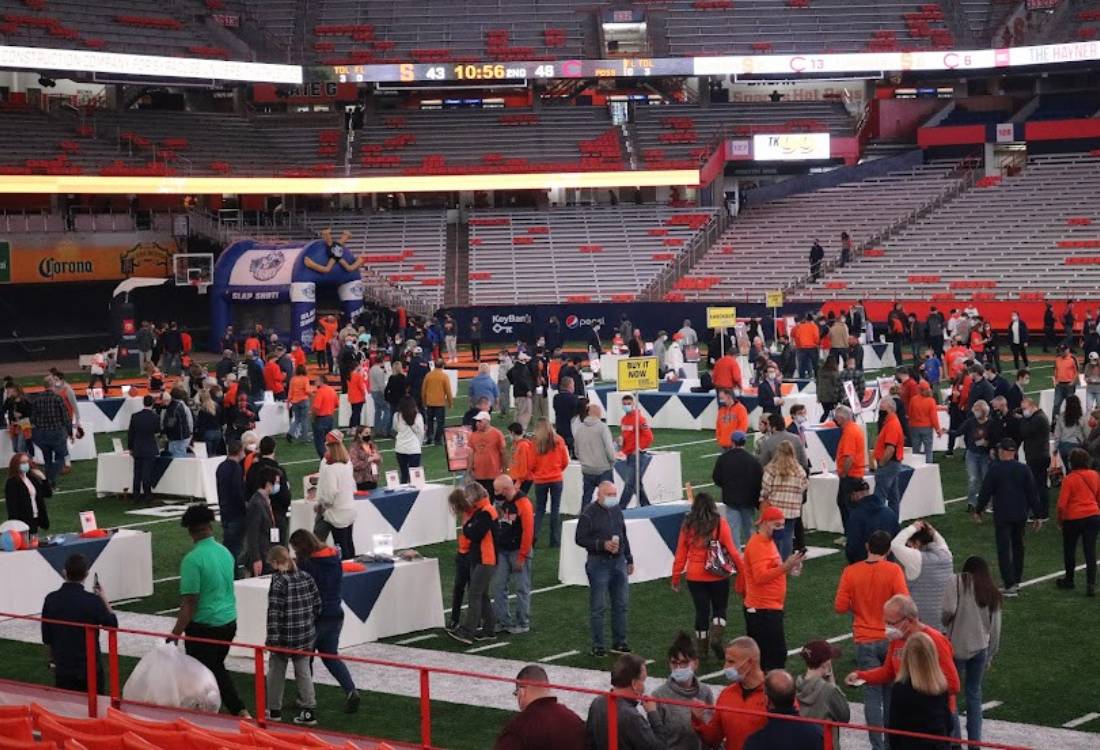
The 20th Annual Charity Sports Auction, presented by the Sport Management Club in the Falk College, will benefit the Central New York-based non-profit Rescue Mission Alliance of Syracuse–and every dollar raised will stay within Syracuse and Onondaga County.
Entirely student-run, the event will be hybrid, with bidding opening online via Classy Live on Dec. 8 and continuing in-person on Dec. 10, when the Syracuse University men’s basketball team takes on Albany in the JMA Wireless Dome. Online bidding will close at 8 p.m. EST on Wednesday, Dec. 11.
The Rescue Mission strives to put “Love into Action” through providing emergency shelter, clothing, and three meals a day every day of the year in Onondaga County. Services including spiritual care, access to mental health professionals, substance abuse programming and physical health services.
“Hearing about all of the great things the Rescue Mission does solidified my determination to help those in need here at home,” says Paige Haines, director of events and community engagement at the Rescue Mission.

Over the past 19 years, the auction has raised more than $713,000 for Central New York nonprofit organizations. Featured items this year include a Kareem Abdul-Jabbar signed playing card, a guitar signed by Sting, a Carmelo Anthony signed Syracuse University jersey, and more.
To further the auction’s mission of community impact, this year’s auction title sponsor is Apex Entertainment. Apex’s support underscores the commitment to making a meaningful difference in the CNY community.
To learn more about the Charity Sports Auction and to register, visit the auction website. Follow on X (@SPM_Auction) and Instagram (@SPM_Auction) for the most up-to-date event information.
This story was submitted by students in the Sport Management Club.
Another Milestone
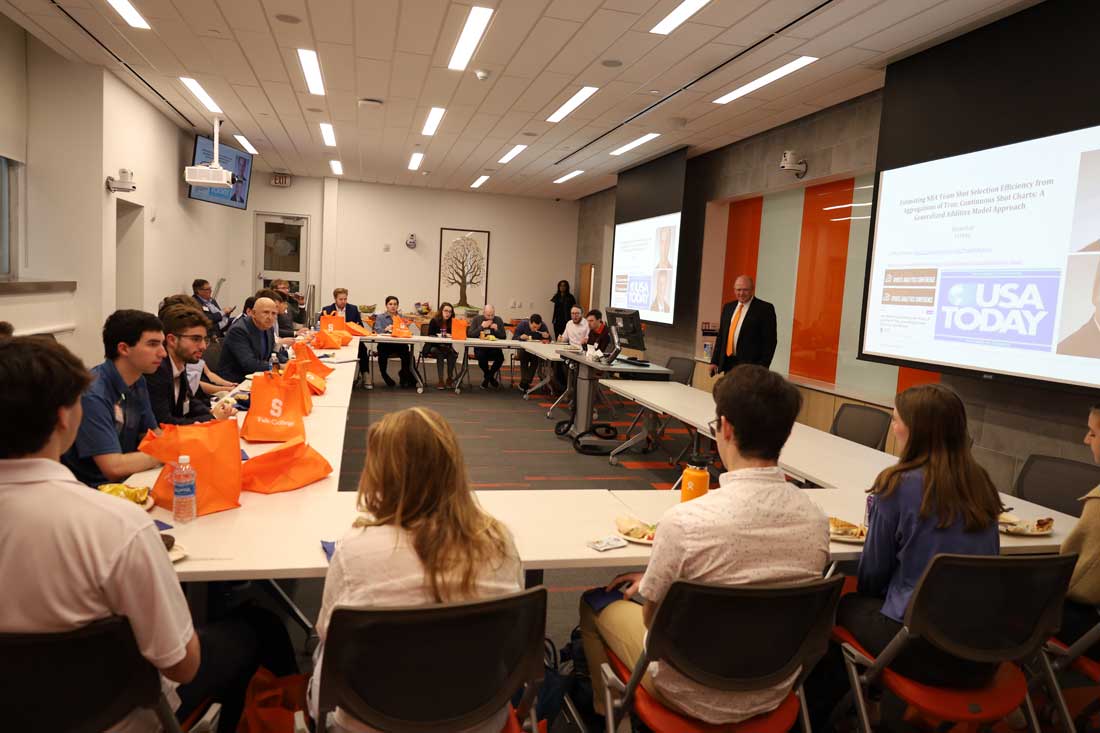
The expanding Sport Analytics program in Falk College’s Department of Sport Management recently reached another significant milestone as it was granted the prestigious Science, Technology, Engineering, and Mathematics (STEM) designation.
This recognition from the U.S. Department of Education is a testament to the program’s academic rigor and alignment with the evolving needs of the sport analytics industry. The major, minor, and Certificate of Advance Study programs now stand alongside the Master of Science degree, which was launched in 2023. Under the leadership of Director Rodney Paul, the Sport Analytics program will be an anchor of the new David B. Falk College of Sport, the first college on a high-research activity campus (R1) to focus on sport-related disciplines.
The College of Sport, which will officially start July 1, 2025, will also include a new research institute focused on sport and will connect business, digital media, technology, and other areas to fuel innovation in sport and health outcomes.
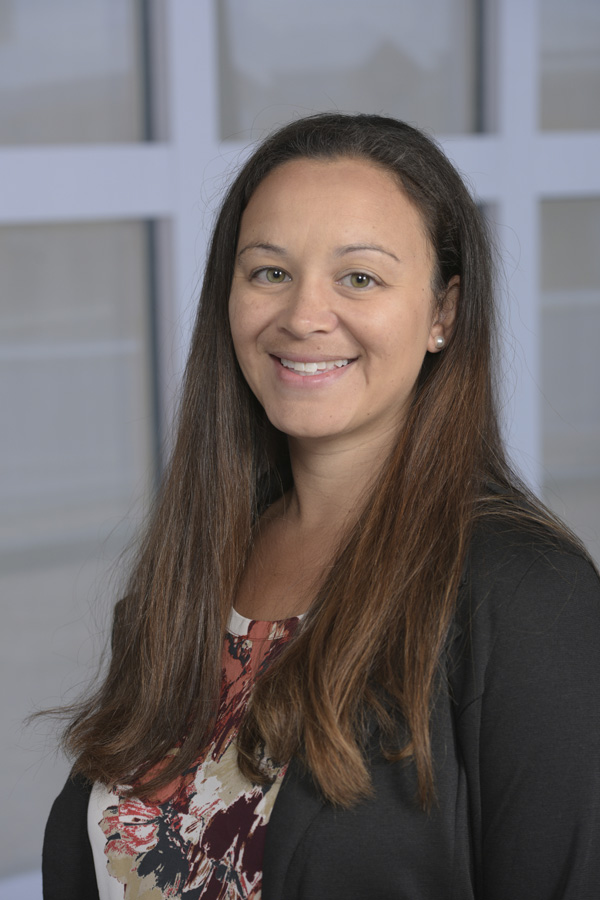
“For Falk College, this elevates our programs to be on par with other schools and colleges who have a STEM designation,” says Jackie Dorchester, program coordinator for the Sport Analytics program. “This allows us to be eligible for grants and funding for quality research that will be a focus of the College of Sport – research that’s being done by students as well as faculty.”
To obtain the STEM designation, Dorchester undertook an extensive assessment of similar programs and diligently applied for the change in Classification of Instructional Programs (CIP). Following a comprehensive review process by Falk College, Syracuse University, and New York State, the designation was implemented at the start of the Fall 2024 semester. This meticulous process ensures the credibility and value of the STEM designation, particularly as the Department of Homeland Security uses CIP codes to determine STEM fields for student visa purposes.
While sport analytics students focus on sports, the skills they learn in the program cover a vast range of skills in demand in today’s job market, including mathematics and statistics, databases and SQL, programming languages, economics and econometrics skills, data science techniques, and effective communication.
This esteemed STEM designation will not only enhance the program’s reputation, but help it attract the best international students. It serves as a testament to the program’s commitment to prepare students for top analytics positions both in the United States and abroad.
“It broadens our applicant pool – enriching the variety of perspectives in our classrooms and programs – and opens doors for international students seeking study and employment opportunities through STEM-designated VISAs,” Dorchester says. “Domestically, it provides greater access to grants and federal funding for students from lower socioeconomic backgrounds, ensuring that education remains an inclusive and transformative opportunity for all.”
Visit the Department of Sport Management academic programs web page to learn more about sport management, sport analytics, and esports in Falk College.
Falk College FAQs
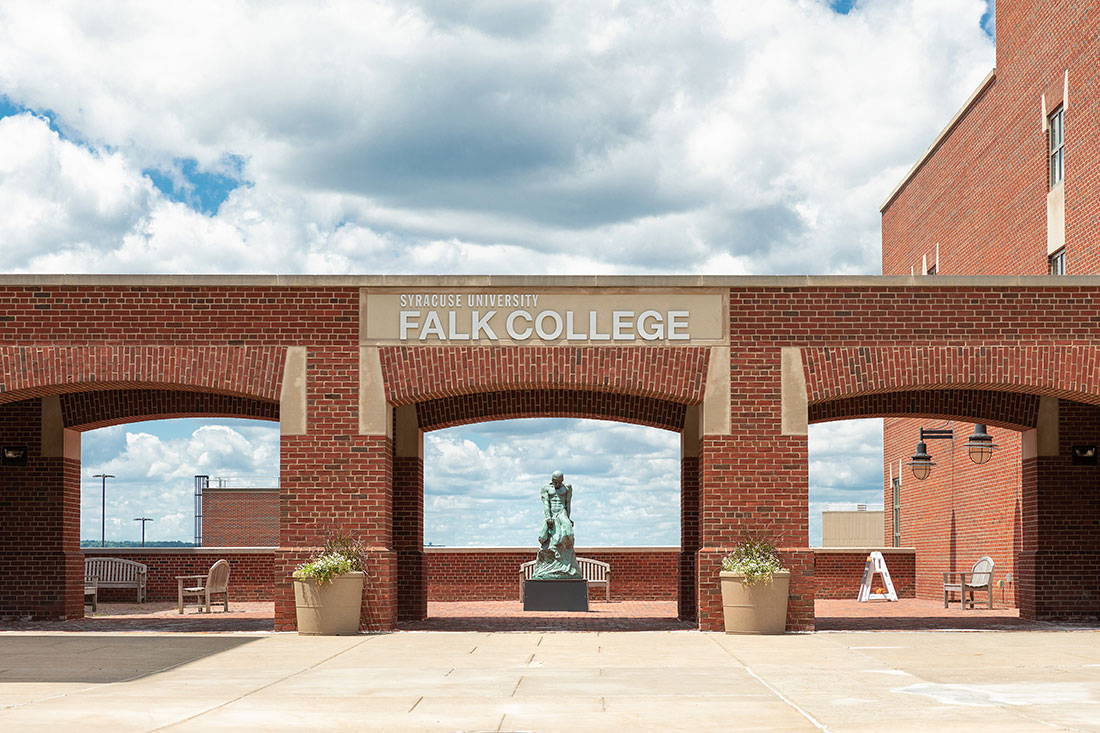
On Nov. 13, Syracuse University announced a go-forward plan to reshape the future of its human dynamics programs and reposition them for short- and long-term success. Here are frequently asked questions about the announcement:
What is the main objective of reshaping Syracuse University’s human dynamics programs?
The primary goal is to reposition and strengthen these academic programs to ensure their success and growth both in the short- and long-term. By consolidating programs and aligning them with colleges that have stronger academic synergies, Syracuse University aims to enhance the community impact, drive enrollment growth, advance research excellence, and better serve students and the broader communities in human, health, and social services.
What specific changes are being made to the human dynamics programs?
The reshaping plan involves the following key changes:
- Human Development and Family Science will merge with Marriage and Family Therapy, becoming one department (i.e., HDFS) within the College of Arts and Sciences.
- Public Health will move to the Maxwell School of Citizenship and Public Affairs.
- The School of Social Work will be housed in the School of Education.
These changes are designed to improve academic collaboration, expand research opportunities, and better align these programs with complementary academic disciplines.
When will these changes take effect?
The changes will go into effect on July 1, 2025. Students graduating through August 31, 2025, will participate in the Falk College of Sport and Human Dynamics commencement ceremonies, and students graduating after Sept. 1, 2025, will be participating in the commencement ceremonies of their new school or college. All students impacted by this transition will continue to receive their diploma from Syracuse University that includes their degree.
How were these changes determined?
These changes were based on an extensive four-month assessment conducted by the Human Dynamics Task Force, which involved input from faculty, students, alumni, and community stakeholders. The task force analyzed the current state of these disciplines, both on campus and at peer institutions, and provided recommendations, which in large part informed the go-forward plan.
Will students already enrolled in these programs be impacted by these changes?
Students currently enrolled in these programs will continue their studies as planned. Starting in Fall 2025, students enrolled in these programs will be placed within the school or college that houses their respective degree program.
Where will faculty and staff in the human dynamics programs be located after the changes?
Faculty and staff in the human dynamics programs will remain physically located in MacNaughton and White Halls–and Peck Hall for the Department of Marriage and Family Therapy–for the foreseeable future, even after the programs are realigned with other colleges.
What are the benefits of these changes for students and faculty?
For students, these changes will lead to stronger academic programs with greater interdisciplinary collaboration, enhanced research opportunities, and better preparation for future careers in human, health, and social services. For faculty, the realignment fosters stronger collaborations across colleges, supporting faculty scholarship and providing a more robust environment for research excellence.
Why is Syracuse University making these changes now?
The changes reflect Syracuse University’s commitment to adapting to the evolving educational landscape and ensuring that its human dynamics programs are positioned for long-term success. This restructuring will allow the programs to better meet the needs of students, faculty, and the communities they serve, while fostering greater academic synergies and promoting growth.
What role did the Human Dynamics Task Force play in these decisions?
The Human Dynamics Task Force, co-chaired by Falk College Associate Dean of Human Dynamics Rachel Razza and Associate Provost for Graduate Studies and Dean of the Graduate School Peter Vanable, played a central role in assessing the current state of the programs, gathering feedback from stakeholders, and formulating strategic recommendations. Their work involved cross-disciplinary collaboration and was instrumental in shaping the final plan for the realignment of these programs.
What is the long-term vision for the human dynamics programs at Syracuse University?
The long-term vision is to create stronger, more integrated programs that foster greater collaboration across disciplines and elevate the university’s impact in fields like human development, public health, marriage and family therapy, and social work. By realigning these programs with other colleges, the university aims to drive enrollment growth, enhance research, and better prepare students for professional careers in the human, health, and social services fields.
Go-Forward Plan

Following four months of deliberate assessment and cross disciplinary collaboration by members of the Human Dynamics Task Force, Syracuse University today announced a go-forward plan to reshape the future of its human dynamics programs and reposition them for short- and long-term success. The plan includes the consolidation of two departments and relocation of all human dynamics programs from the David B. Falk College of Sport and Human Dynamics to other schools and colleges with stronger academic synergies.
“From the beginning of this process, my priority has been developing and implementing a plan that repositions and strengthens the human dynamics academic programs, research and communitywide impact,” says Lois Agnew, interim vice chancellor, provost and chief academic officer. “This repositioning elevates our human dynamics programs, fosters stronger collaborations across colleges, advances faculty scholarship and better serves our students and the communities we serve.”
In June, task force members began assessing the current state of the human dynamics disciplines, both on campus and at peer institutions, aggregating feedback from key stakeholders and compiling recommendations for how these programs can be positioned for success and growth in the future. As part of the go-forward plan:
- Marriage and family therapy will merge with human development and family science and become one department within the College of Arts and Sciences.
- Public health will join the Maxwell School of Citizenship and Public Affairs.
- Social work will be housed in the School of Education.
These changes, informed in large part by task force recommendations, are designed to enhance the academic and community impact of these programs, grow enrollment, drive research excellence and strengthen the University’s long-standing commitment to preparing professionals to thrive in human, health and social services. They will go into effect July 1, 2025.
“I am grateful to the members of the task force for their thorough, thoughtful and strategic recommendations. I also extend my appreciation to the many students, faculty and staff who provided feedback along the way—through surveys, engagement sessions and other opportunities for submitting input. Their participation in this process and candid feedback were invaluable,” says Provost Agnew.
Today’s news follows an April announcement that the Falk College of Sport and Human Dynamics will become the Falk College of Sport, the first standalone college on an R1 campus that specifically focuses on sport through a holistic academic lens. As part of the Falk transformation, the University convened the Human Dynamics Task Force, co-chaired by Rachel Razza, associate dean for human dynamics, and Peter Vanable, associate provost and dean of the Graduate School. The task force, which consisted of human dynamics faculty representatives elected from each department, staff and community partners, delivered a final report to the provost last month.
“This work required a commitment to collaboration, a willingness to engage in challenging but necessary dialogue and a shared focus on the immediate and long-term future of the human dynamics academic disciplines,” says Vanable. “Associate Dean Razza and I are grateful to our fellow task force members for their time, dedication and outstanding work. We also appreciate the provost’s commitment to upholding the spirit of our recommendations and look forward to seeing these programs thrive in the future.”
Razza says, “Syracuse University has long been a leader in interdisciplinary education. The task force agreed that taking a reimagined approach to the human dynamics programs furthers our mission to provide students with a robust, future-focused education that emphasizes both theory and practice. I believe all members of the human dynamics community—students, faculty, staff and Central New York partners—benefit from this important realignment.”
Students currently enrolled in these programs will transition to their new schools and colleges effective July 1, 2025. Students enrolling in these programs in fall 2025 will matriculate into the school or college housing their academic program.
A Syracuse University News story originally published on Nov. 13, 2024.
Sports Marketing Insight
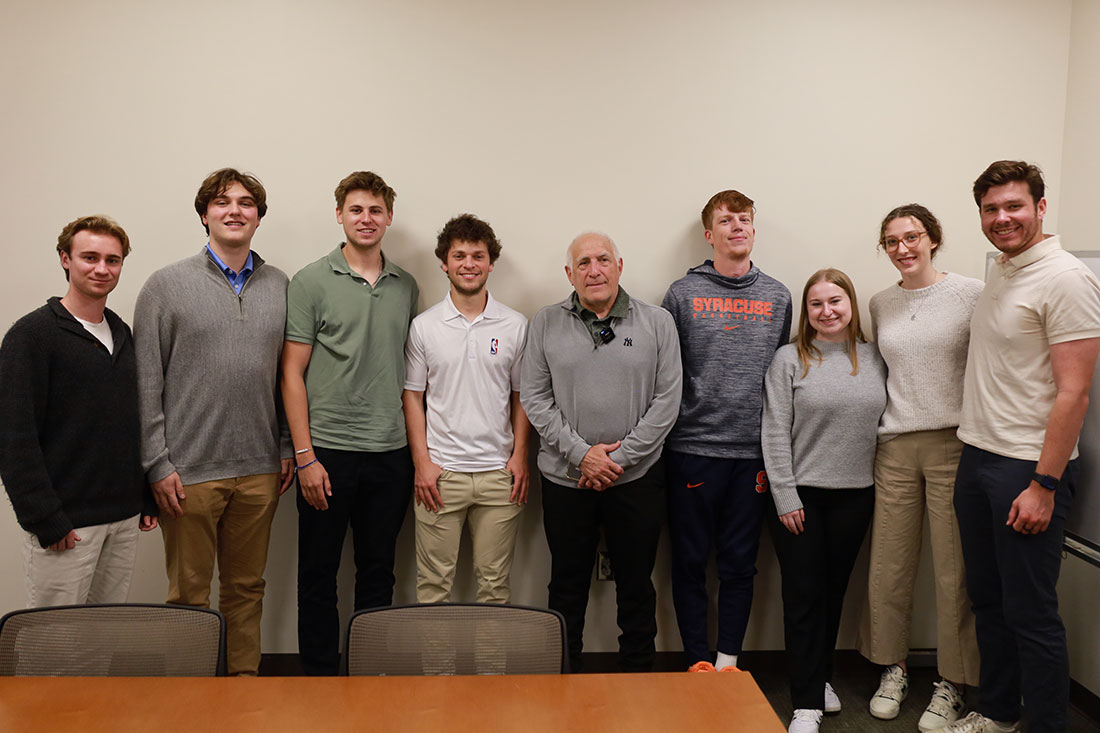
When you combine a great storyteller with a lifetime of great stories, you get . . . Brandon Steiner.
Steiner, who graduated from Syracuse University in 1981 and served as founder and chairman of Steiner Sports Marketing and Memorabilia for more than 30 years, visited the Falk College of Sport and Human Dynamics earlier this fall to speak with students from Falk’s Department of Sport Management. Steiner is chair of Falk’s Sport Management Advisory Council.
From his humble beginnings growing up in a low-income neighborhood in Brooklyn, New York, to working his way through Syracuse, to the creation of Steiner Sports Marketing and Memorabilia, and to the formation of his current companies, The Steiner Agency and Collectible Xchange, Steiner had plenty of colorful stories and business advice to share with the students.
Steiner first met with students from two Sport Management classes: Assistant Teaching Professor Alexia Lopes’ “Principles of Sport Management” class, and David B. Falk Endowed Professor of Sport Management Rick Burton’s “Managing the Sports Organization” class. Following the classes, Steiner had lunch with eight current sport management students (and one alum).
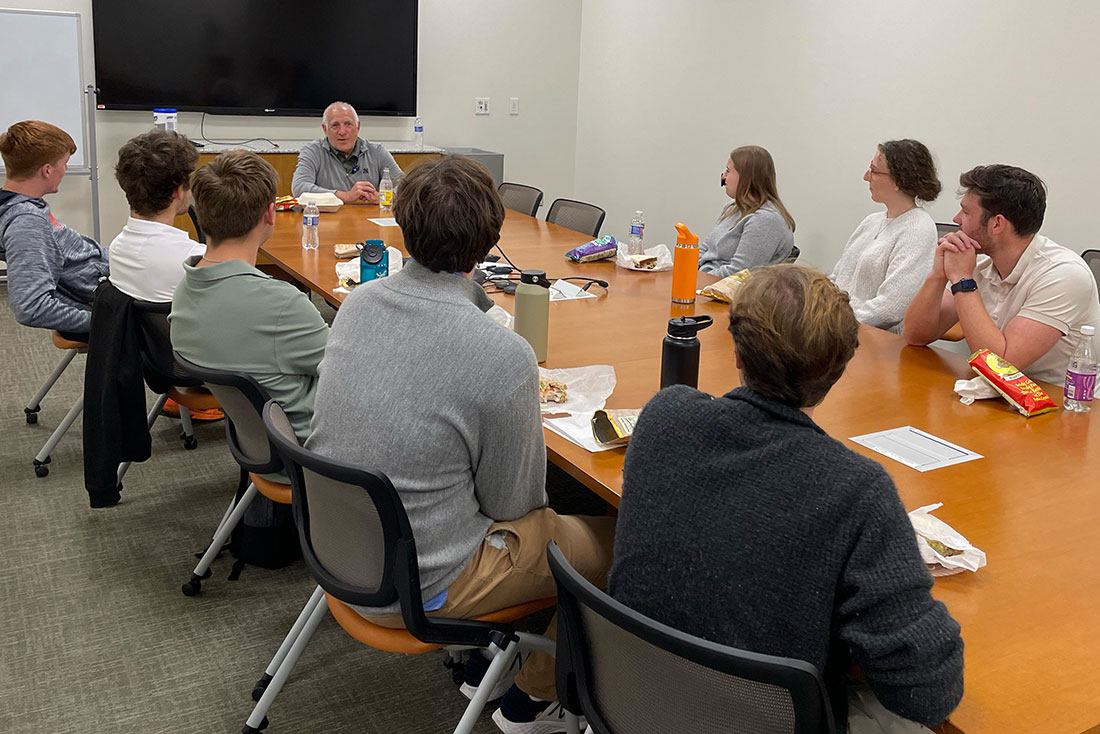
We asked two of those eight students, Erin Moore and Tynan Weathers, to discuss their experience with Steiner. Here’s what they wrote:
Erin Moore ‘25, Sport Management major, Emerging Sport Enterprise minor
“When given the opportunity to attend a lunch with Brandon Steiner, I couldn’t pass it up! From the moment he walked through the door, his passion for the sports industry was undeniable. Listening to his stories about working with New York Yankees legends like Derek Jeter and Mariano Rivera was incredible and they showcased his passion for building personal relationships with clients and consistently delivering beyond expectations.
“It was also inspiring to hear how he’s mentoring younger players, like current Yankees infielder Oswaldo Cabrera, to help them develop not just on the field but in their careers beyond it. During the lunch, he stressed the importance of going the extra mile, thinking outside the box, and developing strong relationships—values that have been key to his success in the industry. Overall, I’m incredibly grateful to Mr. Steiner for taking the time to share his insights with us and to Falk College for offering such a unique opportunity.”
Tynan Weathers ’25, Sport Management major, Food Studies/Business minors
“Talking with Brandon Steiner was certainly an enlightening experience. I thoroughly enjoyed the stories he detailed to us with subjects ranging from Derek Jeter to Oswaldo Cabrera. Mr. Steiner has a passion for the sports industry as well as a major passion for Syracuse University and specifically the Sport Management program. His discussion on both the NIL (Name, Image and Likeness) space and women’s sports brought in real world cases of how he viewed issues and solutions.
“However, my favorite portion of the discussion is the fact that he seemed genuinely interested in our backgrounds, as he asked questions to learn more about who we are and our areas of interest moving forward. A major piece of advice I took away is the importance of being able to dedicate time and make sacrifices that others aren’t willing to make. That’s what puts you ahead of your competition.”
Steiner Student Support Fund
Last academic year, Steiner worked with the Falk College advancement team and Department of Sport Management to create the Brandon S. Steiner Sport Management Student Support Fund that “supports health, housing, education, and overall wellbeing of Syracuse University undergraduate students enrolled in the Department of Sport Management in Falk College.”
The Steiner Student Support Fund awards support for a single academic year, and students can apply for funds by completing this survey. A student can’t be awarded funding more than twice.
In addition to the Steiner Student Support Fund, there are other opportunities and awards available to students in Falk College. Please visit the Awards and Scholarships page on the Falk website for more information on how to apply.
Page 3 of 37
